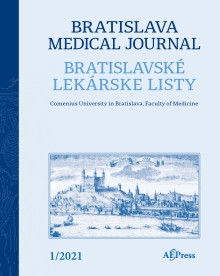Journal info
|
||||
Select Journal
Journals
Bratislava Medical Journal 2024 2023 2022 2021 2020 2019 2018 2017 2016 2015 2014 2013 2012 Ekologia - Ecology Endocrine Regulations General Physiology and Biophysics Neoplasma Acta Virologica Studia Psychologica Cardiology Letters Psychológia a patopsych. dieťaťa Kovove Materialy-Metallic Materials Slovenská hudba 2025Webshop Cart
Your Cart is currently empty.
Info: Your browser does not accept cookies. To put products into your cart and purchase them you need to enable cookies.
Bratislava Medical Journal Vol.125, No.12, p 775–779, 2024 |
||
| Title: Neuroendoscopy-assisted evacuation for supratentorial intracerebral hemorrhage versus conventional craniotomy: A comparative analysis of efficacy and outcome | ||
| Author: Jan BANOCI, Veronika MAGOCOVA, Vladimir KATUCH, Michaela TOMKOVA | ||
| Abstract: BACKGROUND: The endoscopic-assisted approach for intracerebral hemorrhage minimizes traumatization of the brain and allows direct access to hematoma. The study aimed to compare the results of the endoscopic-assisted evacuation for supratentorial hemorrhage versus conventional craniotomy. METHODS: A retrospective study analyzed medical records of patients with supratentorial intracerebral hemorrhage treated at our Neurosurgical Department between January 2015 and December 2023. The study included 91 patients who underwent either neuronavigational-assisted neuroendoscopy (n=25) or conventional craniotomy treatment (n=66). RESULTS: For conventional craniectomy procedures, the average residual volume was 10.1 ml, representing an average 82.1% hematoma evacuation efficacy. After endoscopically assisted procedures, the average residual volume was 3.9 ml, achieving a 92.5% hematoma evacuation efficacy. After the endoscopically assisted procedure, fewer than 10% of patients were revised for early or late complications (2 out of 25 patients), whereas after the craniectomy procedure, revision or the introduction of lumbar drainage for cerebrospinal fluid leakage was performed on 35% of patients (20 patients). CONCLUSIONS: The endoscopic-assisted evacuation of supratentorial intracerebral hemorrhage is becoming preferred because of its efficacy, a small number of complications, and minor trauma for the patient (Tab. 1, Fig. 3, Ref. 16). Text in PDF www.elis.sk |
||
| Keywords: intracerebral hemorrhage, treatment, endoscopy | ||
| Year: 2024, Volume: 125, Issue: 12 | Page From: 775, Page To: 779 | |
| doi:10.4149/BLL_2024_118 |
||
|
|
 download file download file |
|

